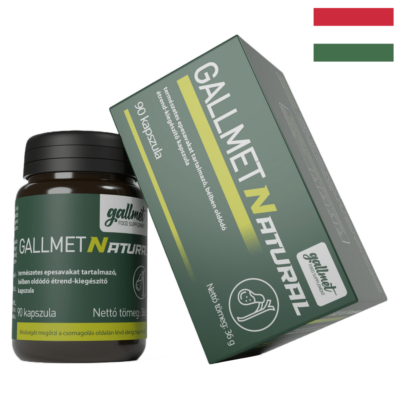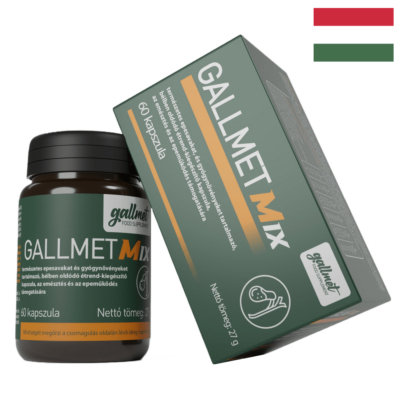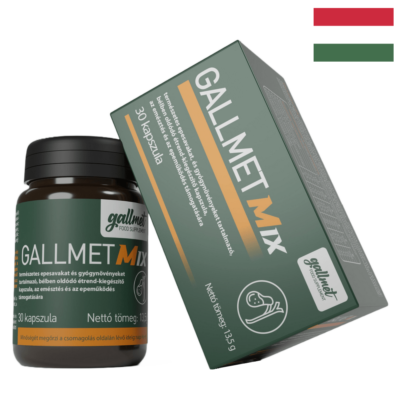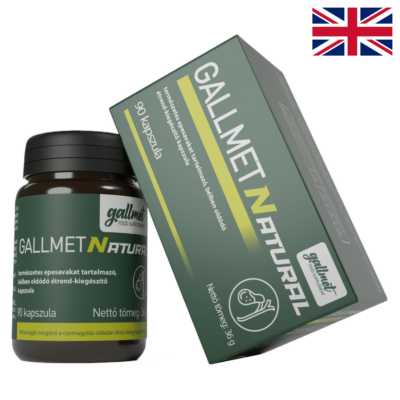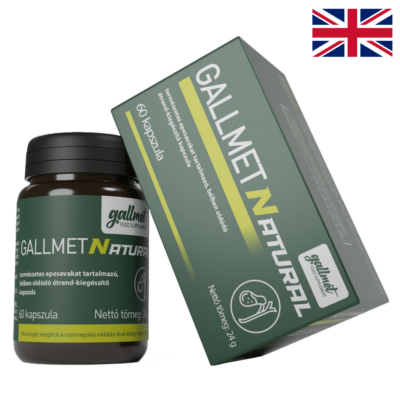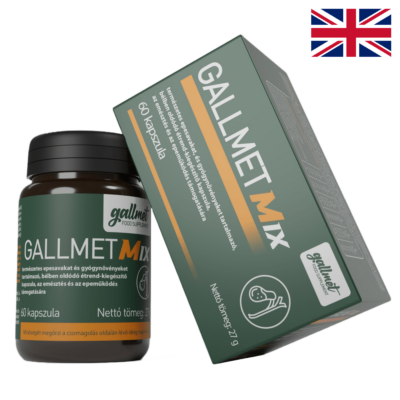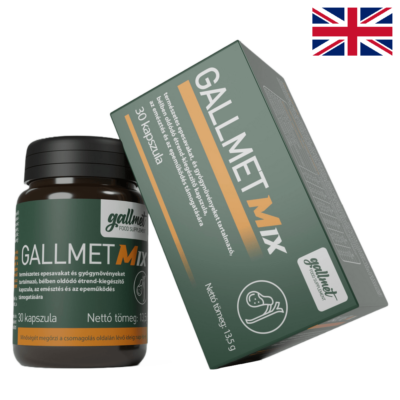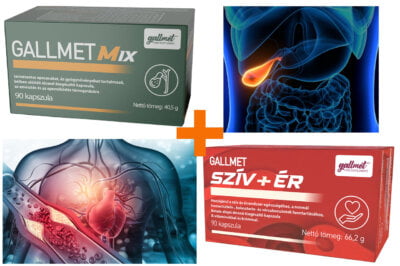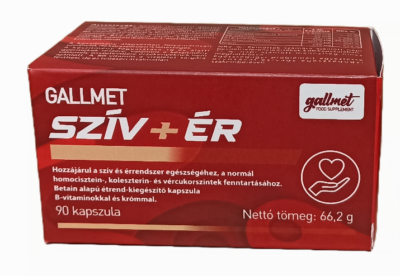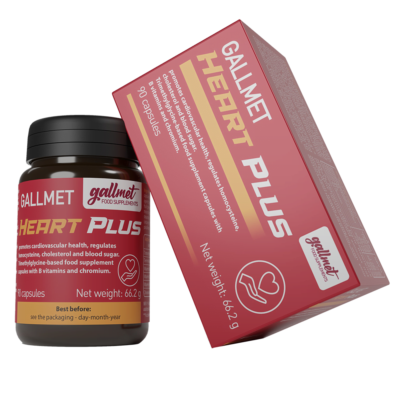ANTIBAC Product Information Leaflets, Literature Leaflet and Laboratory Test
Laboratory analysis of ANTIBAC capsules
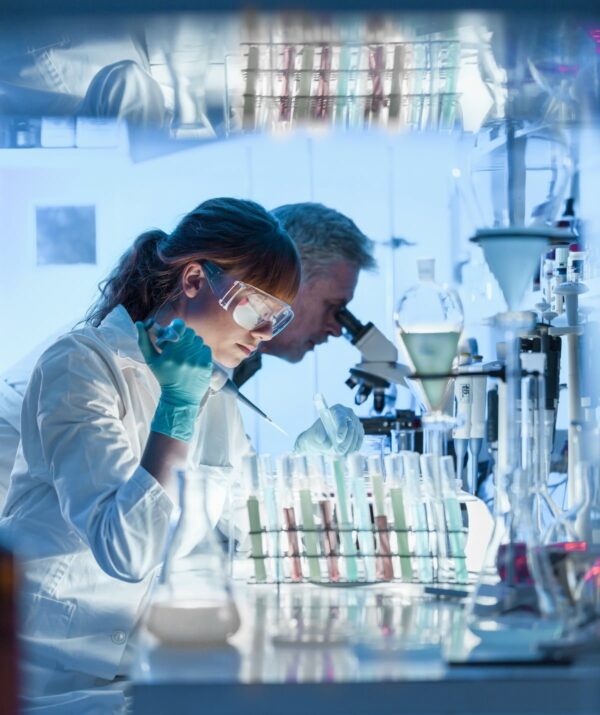
GALLMET products have been tested by the international WESSLING laboratory for:
- Microbiology
- pollutants,
- heavy metals,
- radioactivity,
- doping-free,
- does not contain potency enhancing substances,
- allergen-free (gluten, lactose, casein)
Laboratory test results (.pdf):
Literature fact sheet
Sambucus nigra (elderberry) * Andrographis paniculata (king of bitters) * Allium sativum (garlic) * Marrubium vulgare (white horehound) * Curcuma longa + Piperine (turmeric + piperine) * Bile Acids the significance and physiological effects of its active substances are typically described in the scientific literature
The purpose of this leaflet is to provide consumers with adequate and complete pre-purchase information and to help them make an informed and informed consumer choice by outlining the effects of the listed ingredients, typically from the scientific literature. In doing so, it also promotes the basic consumer protection need to know exactly and clearly what is intended to be used for what purpose prior to purchase, in order to make a purchasing decision, highlighting the enforceability of the exclusive rights of purchasers/consumers to their life and health.
In compiling this leaflet, we have taken full account of the legislation's desire to ensure that consumers have the fullest and most detailed information possible on the effects of the ingredients of the product they are buying, including before they buy it.
The information on the active ingredients of the ingredients is for information purposes only and therefore not indicative of their synergistic effects in the product, which are indicated in the claims in the product information.
The effects of the following ingredients, individually and in combination, do not mean that these effects are always and equally effective for everyone.
If you have any health problems, consult your doctor.
1. The black elderberry supports the immune system to protect the human body:
- Elderflower has been part of European folk medicine for centuries: it is used mainly as a sweating remedy and to treat fever and colds. More recently, the juice and extract of the fruit have also been used to treat colds and flus.
- Elderberry fruit contains high levels of anthocyanins (which give it its colour). These compounds have antiviral activity against respiratory viruses (flu, rhino and coronavirus) and help the immune system to fight viruses1,2.
HUMAN STUDIES
- Extract of elderberry fruit traditional has been shown to speed recovery and reduce symptoms in people with influenza3.
- Similar effects have been observed with colds4. Re-analysis of clinical trial results5 (meta-analysis) confirmed the above findings.
2. Garlic helps to maintain the microbiological balance in the gut and to protect against harmful bacteria and microorganisms:
- In the Middle Ages, garlic was used to prevent epidemic diseases.
- According to several accounts, it has been used effectively to prevent plague.
- The active substances its action against pathogens6 has been proven in a number of experiments. Because of the proven antibacterial effect of sulphur-containing compounds, they could theoretically be used in eradication of Helicobacter pylori infections.7,8
HUMAN STUDIES
- The cardiovascular effects of garlic include slowing atherosclerosis and lowering cholesterol and blood pressure9 clinical studies support.
- Regular use in a course of treatment reduces blood levels of LDL cholesterol, which is responsible for damage to the vessel wall10,11, which is why it is used to slow the development of atherosclerosis.
- Taking garlic also reduced the growth of arteriosclerotic plaques.
- People who eat a lot of garlic are less likely to develop stomach and colon cancer12.
- It is also beneficial in the complementary treatment of gastrointestinal ulcers.
- Effect against respiratory tract infections has been demonstrated in a modern clinical trial13. One study found that long-term preventive use of garlic significantly reduced the risk of developing respiratory infections.
The severity of the 2019 coronavirus (COVID-19) infection varies considerably, with symptoms ranging from asymptomatic illness to severe acute respiratory tract infection. Fever, dry cough, dyspnoea, muscle aches, fatigue, loss of appetite, smell and taste disturbances are the most common general symptoms. A decrease in immune cells and increased inflammatory cytokines are characteristic. Compounds of Allium sativum (garlic) origin are able to reduce the effect of inflammatory cytokines and reverse immunological abnormalities to more acceptable levels. Allium sativum is a beneficial preventive measure before infection with the SARS-CoV-2 virus. Allium sativum is a functional food well known for its immunomodulatory, anti-pathogenic, anti-inflammatory, anti-harmful mutation and anti-tumor properties. Its antiviral efficacy has also been demonstrated. Some constituents of this plant have been found to be active against unicellular parasites. It appears to restore most immune dysfunctions observed in patients with COVID-19 infection and to stop the cytokine storm.
In summary, Allium sativum may be an acceptable preventive measure against COVID-19 infection to boost immune cells and reduce the production and secretion of pro-inflammatory cytokines and the adipose-derived hormone leptin, which is of pro-inflammatory origin.14
3. King of bitters helps the body's natural defences, especially at the level of the upper respiratory tract:
- The extract of the plant has anti-inflammatory, immunomodulatory and anti-inflammatory properties against various pathogens (E. coli, Staphylococcus aureus, Staphylococcus epidermidis, Pseudomonas aeruginosa, B. subtilis, Candida albicans).15,16 and antispasmodic effects have been experimentally proven.
- Internally liver protective and antioxidant17, and when applied topically, it has also been shown to promote wound healing.
- Computer modelling has shown that the andrographolide of the plant can bind to the protease of the SARS-CoV-2 virus, thereby inhibiting its replication18,19. Andrographolides enhance T cell cytotoxicity, NK cell function, phagocytosis and antibody-dependent cell-mediated cytotoxicity20. Through these bioactivities, they are able to inhibit the replication of several viruses (hepatitis C and B, HIV, EBV, CHIKV)21.
HUMAN STUDIES
- In a meta-analysis of data from more than 7000 patients, the effectiveness of andrographis in treating colds22. The results indicate that relieves cough, sore throat, cold symptoms and speeds up recovery23,24 compared to a placebo.
- Andrographis is clinically proven reduces the pain of knee arthritis25 compared to placebo.
- And as a complementary treatment relieves ulcerative colitis26,27 symptoms.
- Sustained use according to a study reduces high blood fat levels28.
- It shows great potential in the treatment of diseases affecting the central nervous system, such as Alzheimer's disease, Parkinson's disease, multiple sclerosis, chronic stress-induced mood disorders, anxiety and depression29.
- Active ingredients of andrographolide (andrographolide, the diterpenoid) its anti-inflammatory effects have been tested in various conditions, such as ischaemia, pyrogenesis, arthritis, liver or nerve toxicity, malignant tumours and oxidative stress. It inhibits the reproduction of viruses and virus-induced diseases.30
4. White horehound helps the intestinal tract, contributes to healthy digestion and normal liver and bile function:
- The bile stimulating effect of white horehound has been demonstrated in animal studies.
- Appetite stimulant and digestive aid31 is related to its bitter substance content. The perception of bitter taste reflexively improves appetite and aids digestion by increasing the secretion of digestive juices.
- Anti-inflammatory, antispasmodic, lowers blood pressure and blood sugar32,33,34,35 is supported by animal data.
- its immunomodulatory effect Salmonella typhimurium36 have been detected in animals infected with the pathogen.
- Against several pathogens (Gram+ bacteria, fungi, parasites such as Toxoplasma gondii, Trichomonas vaginalis and Plasmodium berghei, E. Coli) showed antimicrobial activity37,38 under laboratory conditions.
- Proven antiviral against herpes virus39,40.
HUMAN STUDIES
- No modern clinical trials have been carried out with white horehound, its main uses (to relieve coughs, digestive complaints and improve appetite) are supported by experience of traditional use41.
5. Turmeric + PIPERIN supports the immune system, lung and respiratory health and protection against allergies, is a powerful antioxidant
- Turmeric also has bile production enhancing and gallbladder constricting effects.42 The antispasmodic activity of the drug extract also contributes to the digestive relief.43 Turmeric extract lowers triglyceride levels, which is partly due to increased bile production.44
- Turmeric cholesterol-lowering effect is confirmed by several clinical trials and their meta-analysis45
- The anti-inflammatory effects of curcuminoids have been confirmed by the positive results of several human studies, and their consumption has relieved joint pain.46 Several clinical trials indicate that curcumin can relieve the symptoms of ulcerative colitis, presumably due to its anti-inflammatory effects.47
- The active substance in turmeric, curcumin has shown antiviral activity against various viruses (hepatitis, Zika, Chikungunya, HIV, HPV, herpes and influenza viruses) and experimentally inhibited the replication of the SARS-CoV coronavirus (by inhibiting DNA polymerase and protein kinase)48,49. In addition, it modulates the inflammatory process associated with viral infection and inhibits viral entry into cells by inhibiting ACE2. Through its immunomodulatory and anti-inflammatory effects, it could theoretically be useful in cytokine storm and may reduce cell damage. Its anticoagulant effect may also theoretically be beneficial, as disseminated coagulation occurs in a proportion of patients with covidos.50
6. BILE ACIDS reduce digestive and biliary problems due to bile deficiency, thereby significantly strengthening the weakened immune system and neutralising endotoxins produced by dead cell walls of Gram-negative bacteria, which are the cause of many diseases and are also effective in the treatment of several viral strains (influenza, coronavirus, hepatitis, herpes/Epstein-Barr51, HIV, Ebola) inhibit the spread of viruses by preventing virions from attaching to the host cell membrane, thus preventing viruses from but also breaks down the virion-host cell linkage in established viruses:
6.1. THE ROLE OF BILE ACIDS IN DIGESTION AND THE LACK OF THEM AFTER GALL BLADDER SURGERY (bile deficiency states)
If the bile production, bile excretion, bile circulation is inadequate (bile deficiency, which is common in at least 25% of humans and is the direct or indirect cause of many diseases), the breakdown of fats and digestion will be poor, which can be accompanied by constipation, bloating, malaise and even diarrhoea, and may even be a cause of other diseases. This can be positively influenced by the intake of bile acids with meals.
After gallbladder surgery, the gallbladder's storage function is lost. Bile continues to flow into the duodenum, so in the case of higher bile demand (higher fat meals), there is no bile reserve due to the absence of a gallbladder. So fats are not fully digested (fat metabolism disorder) and when it enters the large intestine, it breaks down the undigested parts of the intestinal flora, causing abdominal bloating and possibly diarrhoea. Due to the absence of a gallbladder, the occasional bile deficiency associated with meals and other resulting diseases can be favourably influenced by the administration of bile acids.
6.2. NATURAL IMMUNITY. About bile acids: physico-chemical protection52. The role of bile acids in the physico-chemical defence of the body53,54.
Bile acids regulate immunity, and bile acids are immunity-dependent, according to recent international research.55
"The important effect of bile acids, which we have recognised and which has since been confirmed by others, is to protect the body in a special way - in the gut.
In 1969, it was found that the intestinal absorption (translocation) of endotoxins is caused by bile acid deficiency. Under natural conditions, however, bile acids protect the body against endotoxins that are always present in the gut, if they are present in sufficient quantities, because they are cleaved into atoxic parts. This protection has also been shown to protect against all agents with a lipoid (lipoproteid) structure (e.g. large viruses with a peplon envelope). The detergent effect of bile acids inactivates yellow fever virus and other 'athropod borne' viruses (taxonomically currently: Flaviviridae family).
This protection system, based on the surfactant (detergent) action of bile acids, has been called physico-chemical protection (Bertók, 2002). Weaker or stronger endotoxaemia due to bile deficiency may play a role in the development of several pathologies, such as septic shock, renal failure in patients with jaundice due to bile duct obstruction, intestinal ischaemia, burn shock, radiation sickness, certain endocrine disorders, psoriasis, atherosclerosis, etc. It has been found that all the effects that damage the intestinal mucosa reduce or completely eliminate the production of cholecystokinin, in the absence of which the gallbladder cannot excrete bile into the intestine, and in its partial absence, the endotoxins released from the dead cell wall of the disintegrated Gram-negative bacteria can be 'absorbed' and, when released into the circulation, can cause endotoxemia, a wide variety of diseases and, in severe cases, shock.
It can therefore be concluded that the physico-chemical defence based on the detergent action of bile acids is a general defence mechanism of the organism that is not limited to bacterial endotoxins but extends to all "agents" (e.g. some viruses) with a lipoprotein or lipoid (peplon) structure on their surface. In addition to the known defence mechanisms of the organism, we can therefore add the physico-chemical defence system of the body, which is deposited by the bile acids produced in the liver and involved in the intestinal-liver circulation."
6.3. STRESS. The negative effects of stress on bile production and bile excretion, and thus digestion, can be counteracted by bile acids56
"Stress is therefore a characteristic set of symptoms that the body's response to any stressor (physical or emotional) can trigger, particularly in women with more sensitive nervous systems.
It cannot be ignored that stress has a significant effect on the whole digestive system, including bile production/void (the sphincter of Oddi, which ensures bile voided, does not open). The disruption of bile production/discharge reduces or suspends a very important defence system of the body, the so-called physico-chemical defence based on the detergent action of bile acids, which leaves the body defenceless against the attack ("translocation") of certain toxins (e.g. endotoxins) and so-called "big viruses" (e.g. herpes group) in the gut."
6.4. From bile kenodeoxycholic acid inhibits the influenza A viral replication by blocking the export of viral ribonucleoprotein complexes via57
EXECUTIVE SUMMARY: Influenza A virus (IAV) infection continues to pose a serious global threat to people, especially those at risk: young children and the elderly. Cenodeoxycholic acid (CDCA), one of the primary bile acids, is produced from cholesterol in the liver and classically functions in the emulsification and absorption of dietary fats. Clinically, CDCA has been used for more than five decades to treat patients with cholesterol epilepsy. In this study, we showed that CDCA reduced the replication of three subtypes of influenza A virus, including the highly infectious H5N1 strain. Mechanistically, CDCA effectively limited nuclear export of viral ribonucleoprotein (vRNP) complexes. In conclusion, CDCA as an endogenous physiological small molecule may at least partially inhibit IAV replication in vivo by inhibiting nuclear export of vRNP and offers further potential for the development of a potential antiviral agent against IAV infections.
6.5. Natural molecules as inhibitors of coronavirus lipid-dependent binding to host cells: a possible strategy to reduce SARS-COV-2 infectivity58
Viral infection depends on interactions between the host cell's plasma membrane and the viral envelope.
METHODS AND RESULTS: We will focus on the role of endocytosis-mediated lipid structures such as lipid rafts and cholesterol and bile, which are mediated by endocytosis, by which viruses attach to and infect cells. Previous studies have shown that a number of naturally occurring substances such as cyclodextrin, sterols, bile acids can reduce the infectivity of a wide range of viruses, including the coronavirus family, by affecting lipid-dependent binding to human host cells.
CONCLUSIONS: Certain molecules can reduce the infectivity of some coronaviruses, probably by inhibiting lipid-dependent binding of the virus to host cells.
6.6. Can the natural detergent (degreasing) properties of bile acids be used to combat COVID-19?
The virus usually affects the respiratory tract, causing illness that ranges from mild symptoms to severe acute respiratory symptoms that lead to death.
It is thought that the lipid layer in enveloped viruses not only protects the genome, but also facilitates its penetration into the cell. In addition, it is believed that these viruses are more sensitive to environmental stressors such as high temperatures (>70°C), extreme pH, etc. Nucleic acids, proteins and lipids are thought to be maintained by non-covalent interactions, which are interrupted by detergents (fat solvents), thus destroying the virus.
While high concentrations of bile acids can cause lysis (degradation) of the cell membrane, at lower doses they have been found to facilitate the delivery of drugs (Amphotericin B and Resveratrol) into cells. Because of their potential pharmaceutical applications, research is being directed towards the synthesis of bile acids and their derivatives. Nowadays, colic acid from bovine bile is used as a starting material for the synthesis of bile acid derivatives.
6.6.1. From bile acids are likely to be effective against SARS-CoV-2:59
Bile acids have anti-inflammatory properties that may be useful in the cytokine storm that is thought to be involved in viral pathogenicity.
Previous studies have shown that bile acids can be incorporated into membrane lipids, altering their distribution and the function of their associated proteins. Our preliminary work on kenodeoxycholic acid and ursodeoxycholic acid showed that these bile acids bind stably to the receptor-binding domain of the S-glycoprotein of SARS-CoV-2. This indicates that bile acids are able to bind SARS-CoV-2
Regardless of the ability of bile acids to degrade the lipid envelope of SARS-CoV-2 and thus destroy it completely, the discovery of this area remains of interest. It is possible, although there is little evidence, that bile acids may have a protective role in SARS-CoV-2 infection, as the virus is less active in the gut due to the presence of bile acids.
So, it remains to be seen whether naturally acting detergents such as bile acids/salts can help to shed the envelope of SARS-CoV-2 and thereby disrupt virion-host cell assembly.
6.7. Hepatitis B and D virus entry and bile salt transport share common molecular determinants in the sodium taurocholate cotransporter polypeptide60
EXCERPT: The hepatic bile acid transporter sodium taurocholate cotransporter polypeptide (NTCP) is responsible for the uptake of a significant proportion of sodium-dependent bile salts by hepatocytes. In addition, NTCP also functions as a cellular receptor for the entry of hepatitis B virus (HBV) and hepatitis D virus (HDV) into the body through specific interaction between NTCP and the pre-S1 segment of the HBV large envelope protein. Mutations in the NTCP residues essential for binding bile salts significantly inhibit viral infection by HDV and HBV; and, although to a lesser extent, residues important for sodium binding also inhibit viral infection. These results indicate that the molecular determinants critical for HBV and HDV entry overlap with the uptake of bile salts by the NTCP, suggesting that viral infection may interfere with the normal function of the NTCP and thus hold the potential for the further development of bile acids and their derivatives into antiviral drugs.
6.8. Large-scale, multicentre, double-blind study of ursodeoxycholic acid (UDAC) in patients with chronic hepatitis C61
BACKGROUND: Oral ursodeoxycholic acid (UDCA) was evaluated on serum biomarkers as a potential treatment for interferon non-responders.
METHODS: CH-C patients with elevated alanine aminotransferase (ALT) levels were randomly assigned to receive ursodeoxycholic acid (UDCA) at 150 (n = 199), 600 (n = 200) or 900 mg/day (n = 197) for 24 weeks.
CONCLUSIONS: A UDCA dose of 600 mg/day was optimal for reducing ALT and AST levels in CH-C patients. A 900 mg/day dose further reduced GGT levels and may be more beneficial in patients with biliary tract injury.
6.9. Inhibitory effects of bile acids and synthetic farnesoid X receptor agonists on rotavirus replication62
EXCERPT: Rotaviruses (group A rotaviruses) are the most important cause of severe gastroenteritis in infants and children worldwide. Currently, there are no antiviral drugs available and information on therapeutic targets for antiviral development for rotaviral infection is limited. Lipid homeostasis has previously been shown to play an important role in rotavirus replication. The farnesoid X receptor (FXR) and its natural ligand bile acids (e.g. kenodeoxycholic acid [CDCA]) play a major role in cholesterol and lipid homeostasis. The results show the following. Firstly, the intercellular pool of triglycerides is significantly increased by rotavirus infection. Second, CDCA, deoxycholic acid (DCA), dose-dependently significantly reduced rotavirus replication in cell culture. We conclude that bile acids play an important role in the suppression of rotavirus replication. We suggest that the mechanism behind the inhibition is the suppression of lipid synthesis by rotavirus infection.
6.10. Bile acids act as soluble host restriction factors that limit cytomegalovirus replication in hepatocytes63
CONCLUSION: The primary site of cytomegalovirus (CMV) replication and latency is the liver. Hepatocytes produce, secrete and recycle chemically diverse bile acids, resulting in inevitable interactions between bile acids and cytomegalovirus.
IMPORTANCE: Cytomegaloviruses are members of the subfamily Betaherpesvirinae. Primary infection leads to latency from which, under immunodeficient conditions, cytomegaloviruses can reactivate and cause severe disease manifestations, including hepatitis. This study describes the unpredicted antiviral activity of conjugated bile acids on MCMV replication in hepatocytes. Bile acids negatively affect viral transcription and have an overall effect on translation. Our data suggest that bile acids act as site-specific soluble host restriction factors against MCMV, which may allow the rational design of anti-citomegalovirus drugs using bile acids and lead compounds.
6.11. Bile acid metabolism and signal transduction64
EXCELLENCE: Bile acids are physiological agents with important roles in the intestinal absorption of nutrients and in the biliary secretion of lipids, toxic metabolites and xenobiotics. The enterohepatic circulation of bile acids from the liver to the intestine and back to the liver plays a central role in nutrient absorption and distribution, metabolic regulation and homeostasis. Bile acid metabolism disorders cause cholestatic liver disease, dyslipidemia, fatty liver disease, cardiovascular disease and diabetes. Bile acids, bile acid derivatives and bile acid sequestrants are therapeutic agents that are suitable for the treatment of chronic liver diseases, obesity and diabetes in humans.
6.12. New directions for the treatment of diseases caused by biliary dysfunction, including acute pancreatitis, Barrett's oesophagus and colorectal cancer, were presented by Professor Péter Hegyi, who and his research colleagues recently reported in the journal Physiological Reviews.65
If the composition, microbiology or pathway of bile is altered, this can lead to the development of serious diseases.
The scientific article also identified around ten drug 'targets' that could be targeted by developing drugs to restore the normal cycling and composition of bile acid. This could reduce the chances of developing disease and the severity of existing conditions.
6.13. Antiviral immunity: link to bile acids66
A recent study describes a new function of intracellular bile acids (BA), a class of cholesterol-derived metabolites, which activate several key innate antiviral signalling components via the TGR5-β-arrestin-SRC pathway to enhance antiviral immunity. This finding represents a new metabolic regulatory dimension of the innate antiviral response and offers a novel antiviral strategy by replacing bile acids.
6.14. The immunomodulatory role of bile acids67
EXTRACT: Enzymatic oxidation of cholesterol produces a number of separate bile acids that act both as fat-solubilising agents that promote the digestion and absorption of dietary lipids and as hormones that activate five separate receptors. The activation of these receptors alters gene expression in multiple tissues, altering not only bile acid metabolism, but also glucose homeostasis, lipid and lipoprotein metabolism, energy expenditure, gut motility, bacterial proliferation, inflammation and the liver-gut axis. This review will focus on the current knowledge on the physiological and pathological and immunomodulatory roles of bile acids, with particular emphasis on bacterial lipopolysaccharides (endotoxins), bile acids and immunological disorders. It reviews the specific role of bile acids in the regulation of innate immunity, various systemic inflammations, inflammatory bowel diseases, allergies, psoriasis, cholestasis, obesity, metabolic syndrome, alcoholic liver disease and colorectal cancer.
6.15. Against Herpes/Epstein-Barr (EBV) virus with bile acids68,69
In the United States, about half of five-year-old children and ~90% of adults have a proven history of infection70. It is also associated with various non-malignant, premalignant and malignant lymphoproliferative diseases.
The outermost envelope of EBV is a peplon (lipid, lipoprotein). Detergent bile acids in the digestive and circulatory systems prevent EBV virions from binding/replicating to host cells and break down the resulting bonds71,72,73.
6.16. Hospital-acquired infections: sepsis and shock caused by Gram-negative bacteria74
Gram-negative bacteremia and associated septic shock are common in modern hospitals. In the United States, the estimated incidence of gram-negative bacteraemia is 71 000-330 000 cases per year. Deaths attributed to this disease range from 18 000 to 132 000 per year. Sepsis is considered a systemic disease caused by microorganisms or their products in the blood. In critically ill patients, gram-negative bacteraemia is synonymous with gram-negative sepsis. Septic shock is a clinical syndrome characterised by circulatory failure and inadequate tissue perfusion (circulation). Septic shock is primarily, although not exclusively, associated with gram-negative bacilli. The outcome of an episode of gram-negative bacteraemia is determined by the underlying disease of the patientPatients with life-threatening disease have a very poor prognosis, while sepsis in previously healthy people has a good prognosis. The overall mortality rate (death rate) for gram-negative bacteria is 25%. At the onset of septic shock, mortality increases to 50-60%. Variation in the prevalence of multi-drug resistant pathogens and its implications in the ICU75
Mortality was found to be higher in patients infected with multi-drug resistant Gram-negative pathogens compared to patients infected with antibiotic-sensitive bacteria. The active ingredients in garlic, white horehound and bile acids have antibacterial activity against Gram-negative bacteria, which account for the majority of hospital-acquired infections!
6.17. COVID-19: Is there evidence to support the use of herbal medicines for adjuvant symptomatic therapy?76
Background: Current recommendations for the self-management of SARS-CoV-2 (COVID-19) include voluntary quarantine, rest, hydration and the use of non-steroidal anti-inflammatory drugs (NSAIDs) for fever only. It is believed that many patients also use other symptomatic/adjuvant treatments such as herbal medicines.
Objectives: An assessment of the expected benefits and risks of designated and traditionally indicated herbal medicines for "respiratory diseases" used as adjuvant treatment in the current COVID-19 epidemic.
Method: The choice of plants was based mainly on species listed in the WHO and EMA registers, but some other herbal remedies were also considered in view of their widespread use in respiratory diseases. These were evaluated using a modified PrOACT-URL method, using paracetamol, ibuprofen and codeine as reference drugs. The benefit/risk balance of treatments was rated as positive, promising, negative and unknown.
Results: In total, 39 herbal medicines have been identified that are likely to be attractive to COVID-19 patients. Based on our methodology, the benefit/risk assessment of herbal medicines was positive in 5 cases (Althaea officinalis, Commiphora molmol, Glycyrrhiza glabra, Hedera helix and Sambucus nigra), promising in 12 cases (Allium sativum, Andrographis paniculata, Echinacea angustifolia, Echinacea purpurea, Eucalyptus globulus essential oil, Justicia pectoralis, Magnolia officinalis, Mikania glomerata, Pelargonium sidoides, Pimpinella anisum, Salix sp., Zingiber officinale), the rest are classified as unknown.
Conclusions: Our work suggests that the safety margins of many herbal medicines exceed those of reference medicines, and that there is a sufficient level of evidence to enter the clinical debate on their potential use as adjuvants in the treatment of early/mild common influenza in otherwise healthy adults in the context of COVID-19. Although these herbal medicines do not cure or prevent influenza, they may improve the general well-being of patients and offer them the opportunity to personalise therapeutic approaches.
References:
1. Inhibition of several strains of influenza virus in vitro and reduction of symptoms by an elderberry extract (Sambucus nigra L.) during an outbreak of influenza B/Panama - Z Zakay-Rones, N Varsano, M Zlotnik, O Manor, L Regev, M Schlesinger, M Mumcuoglu https://pubmed.ncbi.nlm.nih.gov/9395631/
2. Randomized study of the efficacy and safety of oral elderberry extract in the treatment of influenza A and B virus infections - Z Zakay-Rones, E Thom, T Wollan, J Wadstein https://journals.sagepub.com/doi/10.1177/147323000403200205
3. Randomized study of the efficacy and safety of oral elderberry extract in the treatment of influenza A and B virus infections - Z Zakay-Rones, E Thom, T Wollan, J Wadstein https://journals.sagepub.com/doi/10.1177/147323000403200205
4. Elderberry Supplementation Reduces Cold Duration and Symptoms in Air-Travellers: A Randomized, Double-Blind Placebo-Controlled Clinical Trial - Evelin Tiralongo, Shirley S. Wee, Rodney A. Lea https://www.ncbi.nlm.nih.gov/pmc/articles/PMC4848651/
5. Black elderberry (Sambucus nigra) supplementation effectively treats upper respiratory symptoms: a meta-analysis of randomized, controlled clinical trials - Jessie Hawkins, Colby Baker, Lindsey Cherry, Elizabeth Dunne https://pubmed.ncbi.nlm.nih.gov/30670267/
6. Antiviral potential of garlic (Allium sativum) and its organosulfur compounds: A systematic update of pre-clinical and clinical data - Razina Rouf, Shaikh Jamal Uddin, Dipto Kumer Sarker, Muhammad Torequl Islam, Eunus S. Ali, Jamil A. Shilpi, Lutfun Nahar, Evelin Tiralongo, and Satyajit D. Sarkerf https://www.ncbi.nlm.nih.gov/pmc/articles/PMC7434784/
7. Allicin as add-on therapy for Helicobacter pylori infection: A systematic review and meta-analysis - Xiao-Bei Si, Xu-Min Zhang, Shuai Wang, Yu Lan, Shuo Zhang, and Lin-Yu Huo https://www.ncbi.nlm.nih.gov/pmc/articles/PMC6815797/
8. The association of garlic with Helicobacter pylori infection and gastric cancer risk: A systematic review and meta-analysis - Ziyu Li, Xiangji Ying, Fei Shan, Jiafu Ji https://pubmed.ncbi.nlm.nih.gov/30155945/
9. Garlic for hypertension: a systematic review and meta-analysis of randomized controlled trials - X J Xiong, P Q Wang, S J Li, X K Li, Y Q Zhang, J Wang https://pubmed.ncbi.nlm.nih.gov/25837272/
10. Garlic Lowers Blood Pressure in Hypertensive Individuals, Regulates Serum Cholesterol, and Stimulates Immunity: An Updated Meta-analysis and Review - Karin Ried https://pubmed.ncbi.nlm.nih.gov/26764326/
11. Anti-hyperlipidemia of garlic by reducing the level of total cholesterol and low-density lipoprotein A meta-analysis - Yue-E Sun PhD, Weidong Wang PhD, Jie Qin MS https://www.ncbi.nlm.nih.gov/pmc/articles/PMC6392629/
12. Garlic consumption and colorectal cancer risk in man: a systematic review and meta-analysis - Manuela Chiavarini, Liliana Minelli, Roberto Fabiani https://pubmed.ncbi.nlm.nih.gov/25945653/
13. Preventing the common cold with a garlic supplement: a double-blind, placebo-controlled survey - P Josling https://pubmed.ncbi.nlm.nih.gov/11697022/
14. The effects of allium sativum on immunity within the scope of COVID-19 infection - Mustafa Metin Donmaa, Orcish Donmab : https://www.sciencedirect.com/science/article/abs/pii/S0306987720313487?via%3Dihub
15. Andrographis paniculata (Burm. f.) Wall. ex Nees: A Review of Ethnobotany, Phytochemistry, and Pharmacology - Md. Sanower Hossain, Zannat Urbi, Abubakar Sule, and K. M. Hafizur Rahman https://www.ncbi.nlm.nih.gov/pmc/articles/PMC4408759/
16. Harnessing the medicinal properties of Andrographis paniculata for diseases and beyond: a review of its phytochemistry and pharmacology - Agbonlahor Okhuarobo, Joyce Ehizogie Falodun, Osayemwenre Erharuyi, Vincent Imieje, Abiodun Falodun and Peter Langer https://www.ncbi.nlm.nih.gov/pmc/articles/PMC4032030/
17. Review on liver inflammation and anti-inflammatory activity of Andrographis paniculata for hepatoprotection - Lee Suan Chua https://pubmed.ncbi.nlm.nih.gov/25043965/
18. Activity of phytochemical constituents of Curcuma longa (turmeric) and Andrographis paniculata against coronavirus (COVID-19): an in silico approach - Kalirajan Rajagopal, Potlapati Varakumar, Aparma Baliwada, and Gowramma Byran https://www.ncbi.nlm.nih.gov/pmc/articles/PMC7562761/
19. Andrographolide and its fluorescent derivative inhibit the main proteases of 2019-nCoV and SARS-CoV through covalent linkage - Tzu-Hau Shi, Yi-Long Huang, Chiao-Che Chen, Wen-Chieh Pi, Yu-Ling Hsu, Lee-Chiang Lo, Wei-Yi Chen, Shu-Ling Fu, Chao-Hsiung Lina https://www.ncbi.nlm.nih.gov/pmc/articles/PMC7447262/
20. Broad-spectrum antiviral properties of andrographolide - Swati Gupta, K P Mishra, Lilly Ganju https://pubmed.ncbi.nlm.nih.gov/27896563/
21. Andrographis paniculata (Burm. f.) Wall. ex Nees: A Review of Ethnobotany, Phytochemistry, and Pharmacology - Md. Sanower Hossain, Zannat Urbi, Abubakar Sule, and K. M. Hafizur Rahman https://www.ncbi.nlm.nih.gov/pmc/articles/PMC4408759/
22. Andrographis paniculata (Burm. f.) Wall. ex Nees: A Review of Ethnobotany, Phytochemistry, and Pharmacology - Md. Sanower Hossain, Zannat Urbi, Abubakar Sule, and K. M. Hafizur Rahman https://www.ncbi.nlm.nih.gov/pmc/articles/PMC4408759/
23. Andrographis paniculata (Chuān Xīn Lián) for symptomatic relief of acute respiratory tract infections in adults and children: A systematic review and meta-analysis - Xiao-Yang Hu, Ruo-Han Wu, Martin Logue, Clara Blondel, Lily Yuen Wan Lai, Beth Stuart, Andrew Flower, Yu-Tong Fei, Michael Moore, Jonathan Shepherd, Jian-Ping Liu, and George Lewith https://www.ncbi.nlm.nih.gov/pmc/articles/PMC5544222/
24. Andrographis paniculata (Burm. f.) Wall. ex Nees: A Review of Ethnobotany, Phytochemistry, and Pharmacology - Md. Sanower Hossain, Zannat Urbi, Abubakar Sule, and K. M. Hafizur Rahman https://www.ncbi.nlm.nih.gov/pmc/articles/PMC4408759/
25. A double-blind, randomized, placebo-controlled study to assess the efficacy of Andrographis paniculata standardized extract (ParActin®) on pain reduction in subjects with knee osteoarthritis - Juan L Hancke, Shalini Srivastav, Dante D Cáceres, Rafael A Burgos https://pubmed.ncbi.nlm.nih.gov/30968986/
26. Andrographis paniculata Extract (HMPL-004) for Active Ulcerative Colitis - William J Sandborn, Stephan R Targan, Vera S Byers, Dean A Rutty, Hua Mu, Xun Zhang, Tom Tang https://www.ncbi.nlm.nih.gov/pmc/articles/PMC3538174/
27. Randomised clinical trial: herbal extract HMPL-004 in active ulcerative colitis - a double-blind comparison with sustained release mesalazine - T Tang, S R Targan, Z-S Li, C Xu, V S Byers, W J Sandborn https://pubmed.ncbi.nlm.nih.gov/21114791/
28. Effect of Andrographis paniculata Extract on Triglyceride Levels of the Patients with Hypertriglyceridemia: A Randomized Controlled Trial - Kutcharin Phunikhom, Kovit Khampitak, Chantana Aromdee, Tarinee Arkaravichien, Jintana Sattayasai https://pubmed.ncbi.nlm.nih.gov/26434249/
29. A review for the neuroprotective effects of andrographolide in the central nervous system - Jiashu Lu,
Yaoying Ma, Jingjing Wu, Huaxing Huang, Xiaohua Wang, Zhuo Chen, Jinliang Chen, Haiyan He, Chao Huang https://www.sciencedirect.com/science/article/pii/S0753332219315239?via%3Dihub
30. Broad-spectrum antiviral properties of andrographolide - Swati Gupta, K. P. Mishra & Lilly Ganju https://link.springer.com/article/10.1007%2Fs00705-016-3166-3?fbclid=IwAR2pQr6JA7qDzxg8y1IALEQL3lCqaswmwSvLe1fMk-MqrplbaUxEHzQ_U-8
31. An Insight into a Blockbuster Phytomedicine; Marrubium vulgare L. Herb. More of a Myth than a Reality? -
Javier Rodríguez Villanueva, Jorge Martín Esteban https://pubmed.ncbi.nlm.nih.gov/27271209/
32. An Insight into a Blockbuster Phytomedicine; Marrubium vulgare L. Herb. More of a Myth than a Reality? -
Javier Rodríguez Villanueva, Jorge Martín Esteban https://pubmed.ncbi.nlm.nih.gov/27271209/
33. Marrubium vulgare L.: A Phytochemical and Pharmacological Overview - Milica Aćimović, Katarina Jeremić, Nebojša Salaj, Neda Gavarić, Biljana Kiprovski, Vladimir Sikora, Tijana Zeremski https://www.ncbi.nlm.nih.gov/pmc/articles/PMC7355696/
34. Evaluation of in vitro antioxidant and in vivo anti-inflammatory potentialof white Horehound (Marrubium vulgare) Leaves - N. Ghedadba, Leila Hambaba, Haoues Bousselsela, M. Hachemi https://www.researchgate.net/publication/311206266_Evaluation_of_in_vitro_antioxidant_and_in_vivo_anti-inflammatory_potentialof_white_Horehound_Marrubium_vulgare_Leaves
35. A methanolic extract of Marrubium vulgare L. suppresses inflammatory responses in isoproterenol induced myocardial infarction in rats - M. Rameshrad, K. Yousefi, F. Fathiazad, H. Soraya, S. Hamedeyazdan, A. Khorrami, N.Maleki-Dizaji, A. Garjani http://www.rps.mui.ac.ir/index.php/jrps/article/view/977/961
36. Marrubium vulgare L.: A Phytochemical and Pharmacological Overview - Milica Aćimović, Katarina Jeremić, Nebojša Salaj, Neda Gavarić, Biljana Kiprovski, Vladimir Sikora, Tijana Zeremski https://www.ncbi.nlm.nih.gov/pmc/articles/PMC7355696/
37. Marrubium vulgare L.: A Phytochemical and Pharmacological Overview - Milica Aćimović, Katarina Jeremić, Nebojša Salaj, Neda Gavarić, Biljana Kiprovski, Vladimir Sikora, Tijana Zeremski https://www.ncbi.nlm.nih.gov/pmc/articles/PMC7355696/
38. Chemical Characterization and Antibacterial Activity of Phases Obtained from Extracts of Artemisia herba alba, Marrubium vulgare and Pinus pinaster - Zouhir Djerrou https://www.researchgate.net/publication/273371357_Chemical_Characterization_and_Antibacterial_Activity_of_Phases_Obtained_from_Extracts_of_Artemisia_herba_alba_Marrubium_vulgare_and_Pinus_pinaster
39. Marrubium vulgare L.: A Phytochemical and Pharmacological Overview - Milica Aćimović, Katarina Jeremić, Nebojša Salaj, Neda Gavarić, Biljana Kiprovski, Vladimir Sikora, Tijana Zeremski https://www.ncbi.nlm.nih.gov/pmc/articles/PMC7355696/
40. Phytochemical screening and antiviral activity of Marrubium vulgare - Amal Gaber Salman Fayyad, Nazlina Ibrahim and Wan Ahmad Yaakob https://mjm.usm.my/uploads/issues/351/5%20Corrected%20proof%20MJM%20580-13. pdf
41. An Insight into a Blockbuster Phytomedicine; Marrubium vulgare L. Herb. More of a Myth than a Reality? -
Javier Rodríguez Villanueva, Jorge Martín Esteban https://pubmed.ncbi.nlm.nih.gov/27271209/
42. Postprandial Responses of Serum Bile Acids in Healthy Humans after Ingestion of Turmeric before Medium/High-Fat Breakfasts - Tannaz Ghaffarzadegan, Yoghatama Cindya Zanzer Elin Östman Frida Hållenius, Sofia Essén, Margareta Sandahl, Margareta Nyman https://pubmed.ncbi.nlm.nih.gov/31411373/
43. Vasodilating, spasmolytic, inotropic and chronotropic activities of curcuminoids from Curcuma longa in isolated organ preparations of guinea pigs - Q U A Jamil, S M Iqbal, W Jaeger, C Studenik https://pubmed.ncbi.nlm.nih.gov/30279307/
44. Effects of Turmeric (Curcuma longa) Extract in streptozocin-induced diabetic model - Rana Essa, Ahmed M El Sadek, Marine E Baset, Mohamed A Rawash, Diana G Sami, Marwa T Badawy, Maha E Mansour, Hamdino Attia, Mona K Saadeldin, Ahmed Abdellatif https://pubmed.ncbi.nlm.nih.gov/31489664/
45. Efficacy and safety of turmeric and curcumin in lowering blood lipid levels in patients with cardiovascular risk factors: a meta-analysis of randomized controlled trials -
Si Qin, Lifan Huang, Jiaojiao Gong, Shasha Shen, Juan Huang, Hong Ren, and Huaidong Hu https://www.ncbi.nlm.nih.gov/pmc/articles/PMC5637251/
46. Efficacy of Turmeric Extracts and Curcumin for Alleviating the Symptoms of Joint Arthritis: A Systematic Review and Meta-Analysis of Randomized Clinical Trials - James W. Daily, Mini Yang, and Sunmin Park https://www.ncbi.nlm.nih.gov/pmc/articles/PMC5003001/
47. Efficacy of Curcumin as Adjuvant Therapy to Induce or Maintain Remission in Ulcerative Colitis Patients: an Evidence-based Clinical Review - Marcellus Simadibrata, Christopher Christian Halimkesuma, Benedicta Mutiara Suwita http://www.actamedindones.org/index.php/ijim/article/view/520/pdf
48. Curcumin, a traditional spice component, can hold the promise against COVID-19? - Vivek Kumar Sonia, Arundhati Mehta, Yashwant Kumar Ratre, Atul Kumar Tiwari, Ajay Amit, Rajat Pratap Singh, Subash Chandra Sonkar, Navaneet Chaturvedi, Dhananjay Shukla, Naveen Kumar Vishvakarma https://www.sciencedirect.com/science/article/abs/pii/S0014299920306439
49. Botanical drugs and supplements affecting the immune response in the time of COVID-19: Implications for research and clinical practice -Thomas Brendler, Ahmed Al-Harrasi, Rudolf Bauer, Stefan Gafner, Mary L. Hardy, Michael Heinrich, Hossein Hosseinzadeh, Angelo A. Izzo, Martin Michaelis, Marjan Nassiri-Asl, Alexander Panossian, Solomon P. Wasser, Elizabeth M. Williamson https://onlinelibrary.wiley.com/doi/10.1002/ptr.7008
50. Botanical drugs and supplements affecting the immune response in the time of COVID-19: Implications for research and clinical practice -Thomas Brendler, Ahmed Al-Harrasi, Rudolf Bauer, Stefan Gafner, Mary L. Hardy, Michael Heinrich, Hossein Hosseinzadeh, Angelo A. Izzo, Martin Michaelis, Marjan Nassiri-Asl, Alexander Panossian, Solomon P. Wasser, Elizabeth M. Williamson https://onlinelibrary.wiley.com/doi/10.1002/ptr.7008
51. Epstein-Barr virus, Wikipedia, https://en.wikipedia.org/wiki/Epstein%E2%80%93Barr_virus
52. Dr Lóránd Bertók (Doctor of Medicine - Hungarian Academy of Sciences, Professor, He is in 500 Greatest Genuises Of the 21st Century - American Biographical Institute): The role of endotoxins in natural immunity, Hungarian Science, 2004/10, page 1130.
53. Dr Lóránd Bertók (Doctor of Medicine - Hungarian Academy of Sciences, Professor, He is in 500 Greatest Genuises Of the 21st Century - American Biographical Institute): The role of bile acids in the physico-chemical defence of the body, Hungarian Science, 2008/07, page 844
54. Dr Bertók Lóránd (He is in 500 Greatest Genuises Of the 21st Century - American Biographical Institute), Dr Berczi István: Natural Immune Mechanisms and of Species Specific Resistance, Advances in Neuroimmune Biology 1 (2011) 11-24, DOI 10.3233/NIB-2011-002, IOS Pres
55. Antiviral and immune-supporting effects of bile acids https://www.epesavak.hu/virus-immun-szakirodalom
56. Dr Lóránd Bertók (Doctor of Medicine - Hungarian Academy of Sciences, Professor, He is in 500 Greatest Genuises Of the 21st Century - American Biographical Institute): New aspects in the pathophysiology of stress - In memory of Selye, Hungarian Science, 2007/05, page 607
57. Luo L, Han W, Du J, Yang X, Duan M, Xu C, Zeng Z, Chen W, Chen J: Chenodeoxycholic Acid from Bile Inhibits Influenza A Virus Replication via Blocking Nuclear Export of Viral Ribonucleoprotein Complexes. Molecules. 2018 Dec 14;23(12). E3315. : https://www.ncbi.nlm.nih.gov/pmc/articles/PMC6321071/
58. Baglivo M, Baronio M, Natalini G, Beccari T, Chiurazzi P, Fulcheri E, Petralia PP, Michelini S, Fiorentini G, Miggiano GA, Morresi A, Tonini G, Bertelli M: Natural small molecules as inhibitors of coronavirus lipid-dependent attachment to host cells: a possible strategy for reducing SARS-COV-2 infectivity? Acta Biomed. 2020 Mar 19;91(1):161-164. : https://www.ncbi.nlm.nih.gov/pmc/articles/PMC7569585/
59. Can natural detergent properties of bile acids be used beneficially in tackling coronavirus disease-19? - Yashwant Kumar, Reena Yadav & Alka Bhatia: https://www.futuremedicine.com/doi/10.2217/fvl-2020-0210?fbclid=IwAR2oi8q6zFhKLcxub7C-rEs7iLXjEJmSk7JCB5GYPbJYzBZvDpLGjG1dv40
60. Huan Yan, Bo Peng, Yang Liu, Guangwei Xu, Wenhui He, Bijie Ren, Zhiyi Jing, Jianhua Sui, Wenhui Licorresponding: Viral Entry of Hepatitis B and D Viruses and Bile Salts Transportation Share Common Molecular Determinants on Sodium Taurocholate Cotransporting Polypeptide. Journal of Virology 2014 Mar; 88(6): 3273-3284. : https://www.ncbi.nlm.nih.gov/pmc/articles/PMC3957944/
61. Omata M , Yoshida H, Toyota J, Tomita E, Nishiguchi S, Hayashi N, Iino S, Makino I, Okita K, Toda G, Tanikawa K, Kumada H; Japanese C Viral Hepatitis Network.": A large-scale, multicentre, double-blind trial of ursodeoxycholic acid in patients with chronic hepatitis C. Gut. 2007 Dec;56(12):1747-53. Epub 2007 Jun 15. : https://www.ncbi.nlm.nih.gov/pmc/articles/PMC2095694/
62. Yunjeong Kim, Kyeong-Ok Chang: Inhibitory Effects of Bile Acids and Synthetic Farnesoid X Receptor Agonists on Rotavirus ReplicationJournal of Virology. 2011 Dec; 85(23): 12570-12577.: https://www.ncbi.nlm.nih.gov/pmc/articles/PMC3209393/
63. Schupp AK, Trilling M, Rattay S, Le-Trilling VTK, Haselow K, Stindt J, Zimmermann A, Häussinger D, Hengel H, Graf D.: Bile Acids Act as Soluble Host Restriction Factors Limiting Cytomegalovirus Replication in Hepatocytes. Journal of Virology. 2016 Jul 11;90(15):6686-6698. : https://www.ncbi.nlm.nih.gov/pmc/articles/PMC4944301/
64. John Y. L. Chiang: Bile Acid Metabolism and Signaling. Compr Physiol. 2013 July ; 3(3): 1191-1212. https://www.ncbi.nlm.nih.gov/pmc/articles/PMC4422175/
65. Peter Hegyi, Jozsef Maléth, Julian R. Walters, Alan F. Hofmann, Stephen J. Keely: Guts and Gall: Bile Acids in Regulation of Intestinal Epithelial Function in Health and Disease. Physiological Reviews: Volume 98Issue 4October 2018Pages 1983-2023 https://journals.physiology.org/doi/full/10.1152/physrev.00054.2017
66. Jing Wang, Richard A. Flavell & Hua-Bing Li: Viral immunity: a link to bile acids. Cell Research volume 29, pages177-178(2019) 18 February 2019: https://www.nature.com/articles/s41422-019-0148-5
67. Sándor Sipka, Geza Bruckner: The Immunomodulatory Role of Bile Acids. International Archives of Allergy and Immunology September 2014 165(1):1-8: https://www.researchgate.net/publication/266582501_The_Immunomodulatory_Role_of_Bile_Acids
68. Epstein-Barr virus, Wikipedia-EN: https://en.wikipedia.org/wiki/Epstein%E2%80%93Barr_virus
69. Epstein-Barr virus, Wikipedia-HU: https://hu.wikipedia.org/wiki/Epstein%E2%80%93Barr-v%C3%ADrus
70. National Center for Immunization and Respiratory Diseases https://www.cdc.gov/epstein-barr/about-ebv.html
71. Viruses, Wikipedia: https://en.wikipedia.org/wiki/Virus
72. Virus, Wikipedia: https://hu.wikipedia.org/wiki/V%C3%ADrus
73. Viral Capsids and Envelopes:Structure and Function - William Lucas, David M Knipe https://www.semanticscholar.org/paper/Viral-Capsids-and-Envelopes-Structure-and-FunctionLucas91357e1357c82c7527a0dc99057e7a843407d2ea
74. Landesman SH, Gorbach SL.: Gram negative sepsis and shock. Orthop Clin North Am. 1978 Jul;9(3):611-25. : https://www.ncbi.nlm.nih.gov/pubmed/358039
75. Orsolya Szűcs dr., Katalin Kristóf dr., Katalin Darvas dr., Ákos Csomós dr: Changes in the prevalence of multi-drug resistant pathogens and implications for the intensive care unit. Medical Journal, 2011, 152, 1486-1491. : https://repo.lib.semmelweis.hu/bitstream/handle/123456789/731/1694262. pdf?sequence=1
76. COVID-19: Is There Evidence for the Use of Herbal Medicines as Adjuvant Symptomatic Therapy? - Dâmaris Silveira,1,*† Jose Maria Prieto-Garcia,2,*† Fabio Boylan,3 Omar Estrada,4 Yris Maria Fonseca-Bazzo,1 Claudia Masrouah Jamal,5 Pérola Oliveira Magalhães,1 Edson Oliveira Pereira,1 Michal Tomczyk,6 and Michael Heinrich7,*†: https://www.ncbi.nlm.nih.gov/pmc/articles/PMC7542597/
Click on the icon to print the page:
GALLMET products are available in ALL Hungarian pharmacies and herbal shops or can be ordered!
Both GALLMET products contain similar amounts of bile acids, but GALLMET-M also contains herbs that complement the digestive benefits of bile acids.
Purchase directly from the manufacturer
Use GALLMET at your own risk and it is recommended that you consult your doctor!
To view international shipping rates and deadlines, add items to your cart and then enter your address!
GALLMET-NATURAL 90 pcs + HEART PLUS 90 pcs capsules in a bundle at a better price
19 490 FtSpecial price:
16 000 FtThe discounted price can be used once per order and cannot be combined with any other 90-piece GALLMET discount, discounts will be detailed at the checkout.
MegveszemGALLMET-MIX 90 pcs + HEART PLUS 90 pcs capsules in a bundle at a better price
19 490 FtSpecial price:
16 000 FtThe discounted price can be used once per order and cannot be combined with any other 90-piece GALLMET discount, discounts will be detailed at the checkout.
MegveszemGallmet-Natural 90 pcs + AntiBac 30 pcs capsules in a bundle at a better price
14 250 FtSpecial price:
11 000 FtThe discounted price can be used once per order and cannot be combined with any other 90-piece GALLMET discount, discounts will be detailed at the checkout.
MegveszemGallmet-Mix 90 pcs + AntiBac 30 pcs together at a better price
14 250 FtSpecial price:
11 000 FtThe discounted price can be used once per order and cannot be combined with any other 90-piece GALLMET discount, discounts will be detailed at the checkout.
Megveszem



